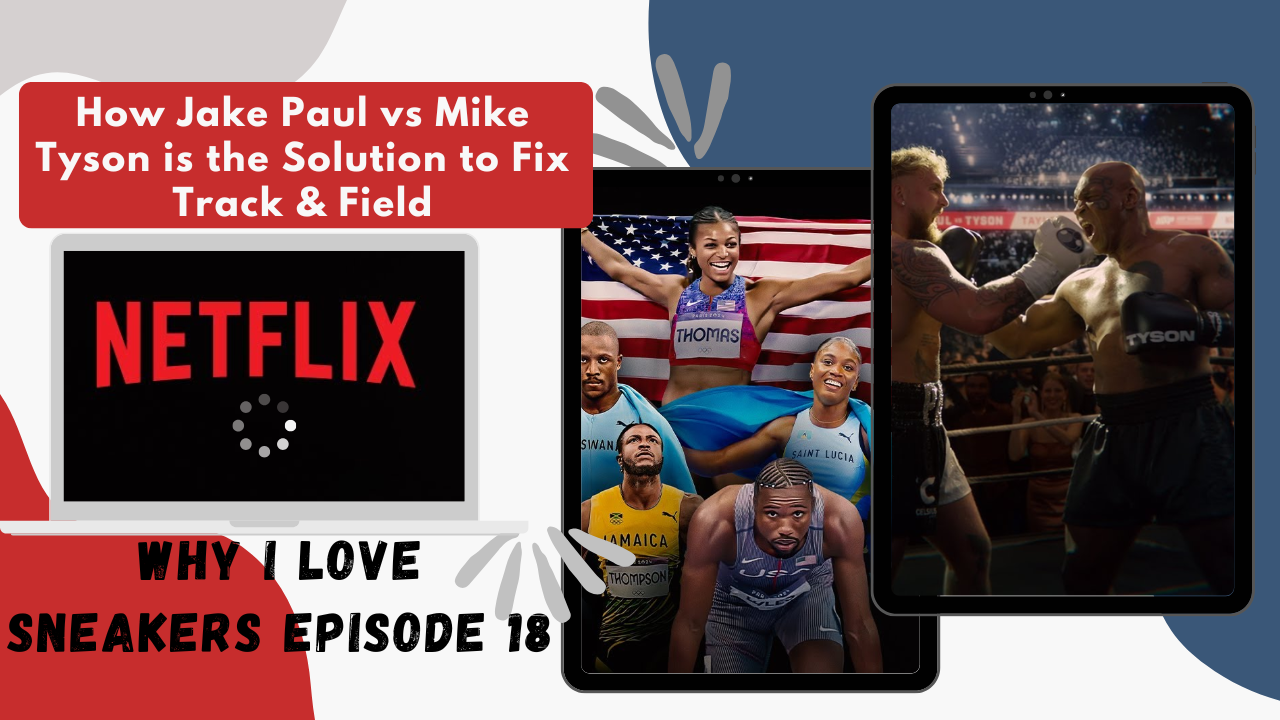![]()
The subtitle should obviously be, if they fix the bugs in their livestream. We had to exit the livestream of the Tyson vs Paul event around 8 times. We switched to our phones for some parts of the event. The phone didn’t have any of the lag or buffering issues. Which creates the question of streaming data pipelines in cellular vs broadband; but this isn’t a technical discussion.
Tech does require an introduction due to this being Netflix’s first sports livestream, but data would have to be shared on where viewers watched to establish where the clog took place. During the event there was a troubleshooting questionnaire pop-up suggesting I turn off or reset my connection after Netflix’s troubleshooting showed my internet speed dropped to 12mbps.
Ultimately, by the airing of the Tyson vs Paul fight Netflix seemingly worked out some of the bugs and the 8-round exhibition, sanctioned as a real fight, played without many interruptions, but had several decreases in quality. The four fights on the card ended up being a showcase for women’s boxing with Katie Taylor vs. Amanda Serrano providing the type of old school slugfest boxing became famous for.
While I could provide a breakdown of each fight, that’s not the point of this post. Here’s what’s important, our family watched the event from its 7pm start to midnight. Friday nights are typically reserved for movies, dinner dates, clubs and other events, but Netflix captured our attention for 5 hours. I even planned ahead by buying snacks and chicken wings because we always go out on Friday nights. Netflix may have had issues with the livestream, but this event was the perfect option to work out the kinks prior to their next live sports feature, the NFL on Christmas Day.
Netflix and Growth
Do you know the two biggest streaming platforms in the world are Netflix and YouTube? Here is something interesting, Netflix has 29.3 million subscribers on YouTube and the videos there are primarily trailers for their original content. The Tyson vs Paul event allowed the company an opportunity to build out sports related videos in digital chunks on YouTube allowing for the promotion of the event. 60 million people tuned in for Tyson vs Paul. 50 million watched the Taylor vs Serrano match up. Incredible numbers.
Six months ago, Netflix began creating YouTube videos for the event. This provided Netflix with additional ad revenue for sports related content. When considering the ad tier subscription for Netflix has risen to 30%, the addition of sports content is a growth opportunity for a platform which had plateaued in growth.
The relationship between YouTube and Netflix offers an interesting opportunity for niche sports particularly since Netflix has successfully introduced sports documentaries on the platform. In particular, the Sprint series following track and field athletes. Track is a difficult sport to carry. Unlike traditional team sports, track has a multitude of events, and a meet can extend over the course of two days for world competitions.
The Tyson vs Paul event kept attention for the length of a track and field event which opens the door for a true shakeup of the sport especially since Netflix is currently building the foundation of the sport through the Sprint series which just launched Season 2.
Sprint, YouTube and Netflix
Grand Slam Track did not announce how much the deal was for the league to be shown on Netflix, but Netflix carrying the four competitions is a move in the right direction, but Grand Slam Track is not a perfect solution. Track’s visibility is fractured due to an ending relationship with Peacock, a new relationship with FloTrack and an abundance of events at every level of the sport. The only time track and field moves into the public conscience is during an Olympic year. Track on the surface seems very similar to golf and tennis. The big difference however is that golf and tennis are steeped in tradition based on long time events like the Masters and Wimbledon. The sports are also favored by wealthier and higher income people.
Track and field’s most prominent event is the Diamond League which many Americans are unfamiliar with. In a year where Athlos NY, women’s only track event that took place post Olympics, launched to great success:
Athlos NYC 2024, Running Brands and the Growth Potential of Track & Field
Track and Field still suffers from a lack of cohesion and the difficult aspect of televising the competitions. When considering that the college track and field national championships barely register as an event to be covered by media outlets, it’s understandable why professional track has such a difficult position. How could Netflix help? Netflix had its issues with the Paul vs Tyson event, but the bugs will undoubtedly be worked out by the NFL games on Christmas Day. As the NFL and the major leagues (MLB and NBA) are the remaining bastions of advertising, a true track and field league streamed on Netflix and broken down into digital bites on YouTube could be critical to the elevation of track and field.
Read my solution for:


